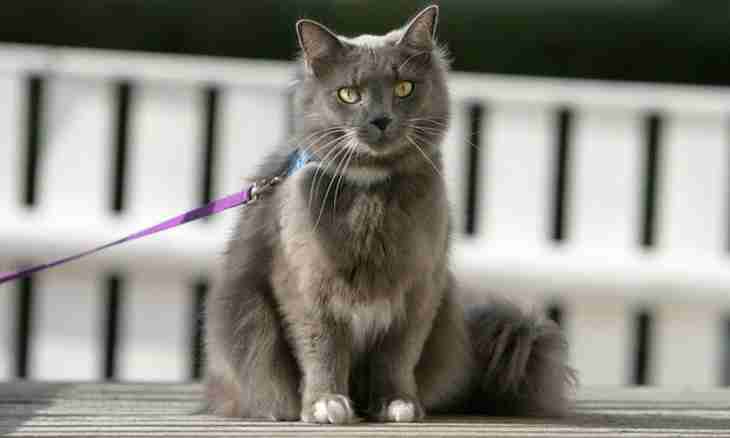Lately more and more owners began to use industrial forages for providing the balanced diet of the favourites. But how to understand that variety which is presented at the market of pet goods today? How it is correct to choose a cat's forage?
Instruction
1. Choose type the kormavsa can divide cat's forages conditionally into two main types - tinned and dry. Each of these types of forages has the advantages. The dry feed has a long period of storage and rather low cost. Besides, the regular use of dry feeds reduces risk of formation of a scale. The can forage has more saturated taste. It is easily acquired by an organism and, as a rule, is eaten by pets with great pleasure. However when feeding by a tinned forage, it is necessary to remember that this product is high-calorific. At regular overeating the cat very quickly gains excess weight. The main lack of such forage is the small period of storage after opening banks. It is necessary to store a forage in the fridge. Before giving it to an animal, it is necessary to warm up mix up to the temperature of 37-39 degrees.
2. Study etiketkusledut to remember that division of a forage into "classes" is very conditional. Especially it belongs to sterns of domestic production. To estimate quality of any given forage, it is necessary to study its structure attentively. Make sure that meat takes the first position in the list of ingredients - it means that it is a forage basis.
3. For express assessment of a class of the product chosen by you it is possible to use specially developed scale. This method will allow you to estimate structure and quality of a forage, proceeding their its ingredients. A reference point in this scale are 100 points. Take away 10 points for: - existence of each of an offal; - preservatives; - etoksikvin; - existence of each "inconcrete" product - for example, "meat meal" Take away 5 points for: - existence of each of a grain offal; - the repeating mention of one of grain components in the first five of components; Take away 3 points if: - two of the first three components of a forage are not meat products; - corn is a part; - there are artificial dyes; Take away 2 points if: - corn is located in the first five of components; - there are animal fats of unknown origin; - a forage it is not intended for the animals having an allergy, but only meat of a lamb is a part; - soy is a part; - in components wheat is specified; Take away 1 point for availability of salt. Add 1 point for each additional meat ingredient and also if the structure of a forage includes: - the vegetables which are not containing pesticides; - chondroitin; - sunflower oil; - oatmeal or oats; - glycosamine; Add 2 points if on the label it is specified that "meat" was grown up without use of hormones and antibiotics. If linseed oil and barley are a part. Add the 3rd point for: - vegetables; - fruit; - probiotics; Add 5 points if the forage is approved by nutritionists and veterinarians, it was made without application of an extruder, its components are noted as "human grade" or "organic". Count quantity of points. Forages which gained 94-100 points belong to class A. In - 86-93 points. With and D - 78-85. All forages which gained less than 78 points belong to class F.
4. Even when choosing forages of a superpremium class you should not forget that food has to be selected taking into account age and the state of health of a cat. For example, it is impossible to give the forage intended for kittens, an adult animal. It is necessary to remember that on any, even the best forage, at a specific animal can arise individual intolerance. The best indicator that the forage is chosen correctly is the good condition of health and activity of your cat.

